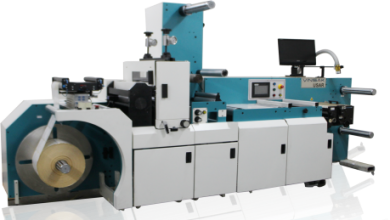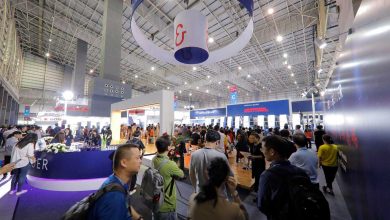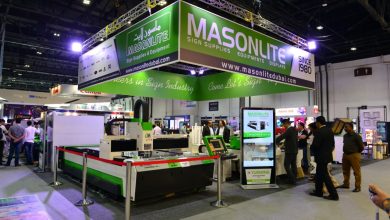What Was New At FESPA 2013?
HP Latex 3000, Inca Digital, Efi VUTEk and Durst were several of the worthwhile wide-format inkjet printer technologies to experience at FESPA 2013. The new latex curing technology of HP was a noticeable and impressive advance for curing latex ink. Adhesion and colour gamut have been improved over previous generations of latex ink chemistry. I hope at next FESPA to see comparable advances in colour gamut and colour POP. Once the colour surpasses UV-cured gamut, then latex printing will be the new reference point in wide-format signage. But definitely the curing portion has now been dramatically improved. And the third generation ink is an improvement in several respects. I look forward to the next generation.
The HP Scitex FB10000 was also launched at FESPA 2013. This is a higher production, better print quality, more sophisticated version of the popular HP Scitex 7600. The machine was in a walled-off area so it was much easier to access the Inca Q40i in the Fujifilm booth. The Inca was not walled off and was fully open to inspection in all aspects. I have been to the Inca Digital factory in a past year and found their engineering and machine quality commendable.
 I also enjoyed visiting booths with Memjet MEMS printhead technology, especially the OWN-X printer, available via Reprographic Technology International’s (RTI) in UK. I still would like to see a viable replacement nozzle system, via software or hardware, and until I can evaluate these printers out in real world conditions we are inherently cautious, but Peter Barton of RTI is doing an excellent job of bringing this technology to FESPA.
I also enjoyed visiting booths with Memjet MEMS printhead technology, especially the OWN-X printer, available via Reprographic Technology International’s (RTI) in UK. I still would like to see a viable replacement nozzle system, via software or hardware, and until I can evaluate these printers out in real world conditions we are inherently cautious, but Peter Barton of RTI is doing an excellent job of bringing this technology to FESPA.
FujiXerox and Oce are also working on Memjet technology, but Xante totally failed to exhibit a viable option. These technologies are a great test of to what degree PR releases promise too much when a real product outside the manufacturer’s demo room and outside the expo booth simply does not perform in the manner promised by PR releases. This is why I prefer to visit actual locations where a product is really working, so that I can bring to print shop owners, distributors, and manufacturers a more realistic and definitely a more helpful evaluation.
For solvent ink the newest advance was presented by Seiko II, in their ColourPainter M-64s. The wide colour gamut and bright saturation and visual impact to this new ink is a reminder that other inks still have a way to go to match the needed brightness and literal diversity of colour spectrum of a light solvent ink.
Advantages of attending FESPA 2013
Textile printers, T-shirt printers, UV-cured printers, and especially media and substrates made FESPA the place to be during 2013. On top of that FESPA attracts exhibitors and technology providers such as Diamond (ink dispersion company) and Lubrizol (ink and coatings chemical company) that normally don’t exhibit in any other show around the world.
Although the high cost of London did keep people from attending, four of us from FLAAR felt the event was worthwhile. However it would be appreciated if expo organizers could do more to help exhibitors and attendees to secure accommodation and arrange transportation with reasonable price. We spoke with several wide-format companies who said they did not exhibit because London was infamous for its excessively high costs.
 UV-curing technology
UV-curing technology
The major printer technology was still UV-cured. There were so many brands that we could fill an entire magazine issue just with images of the branded equipment. EFI is making impressive advances in the use of LED curing but at industrial levels. Inca Digital had a really great industrial printer in the Fujifilm booth. At Honle, GEW, and Phoseon booths we learned about new advances in curing chemistry, namely more power for LED curing than two or three years before.
Keeping an eye out for new trends is as important as is doing evaluations of viable products. One trend which you could see was SUV inks. You could also call this “printing with a solvent ink but curing it as a UV ink.” Or you could designate it as a dual phase ink chemistry. You get all the benefits of solvent ink including gloss, great colour brilliance, excellent colour gamut, smooth surface plus the benefits of UV-curing yet with no grainy appearance.
So you have a dual chemistry. Solvent printing benefits colour gamut and glossy appearance for brilliance not (yet) possible with latex ink.
Mimaki started the SUV concept at FESPA 2012 but the printers did not ship for two years, so now several other companies are offering alternatives. Plus more after-market latex inks are becoming available such as from Sam Ink and now from STS Inks. We only label an ink as “latex ink” when it is powerful enough to require special curing. If an ink works in an eco-solvent printer with no additional curing, this is simply another flavor of a basic ink. We prefer the performance of an ink at the high level of HP technology, as well as other alternatives such as the two brands just mentioned.
Just remember, that having a good ink is only the first step. RIP software is crucial for a successful LFP operation. Caldera, ErgoSoft, Onyx, Shiraz, Evolution (in DigiFab booth), ColourGate, SAI and other RIP software were present at Fespa.
Colour management is also crucial, so it was good to see Barbieri exhibiting its new portable spectrophotometer on display.
Textile printers from top manufacturers
Other than ShanghaiTex 2013 or ITMA Asia next year, there are not many places in the world where you can find as many textile printers as the recent FESPA London. ITMA in Italy will have all the Italian brands, but the Chinese brands tend to be at APPPEXPO, D-PES, ShanghaiTex, or ITMA Asia.
In past years VISCOM Milano was a good place to experience textile printers, but one by one the brands dropped out. At FESPA London you had ATPColour, DigiFab, d-gen plus several of the famous international brands of heavy-duty industrial printers from Italy were exhibiting, such as MS and others. A dynamic new brand actually had one of the larger booths, MTEX with POD Iberia.
Agfa launched a nice new model series, Ardeco, (to replace the AguaJet) but it was not yet on exhibit. But all the other key brands were available for inspection, so for textiles FESPA 2013 was a great place to be.
More options for T-Shirt Printers
Although FESPA was still featuring screen printing for T-shirts, you could also find a dozen options in digital printing. For example, Kornit Digital provides the largest selection of serious industrial style T-shirt production in the inkjet realm. For smaller print shops you can also get pigment ink for T-shirts from Hongsam and other suppliers.
Inkjet printing inks at FESPA
A dozen ink companies at FESPA provide a good sample of what is available from China (Hongsam and others), Korea (Durafos and other brands), from Taiwan (Jetbest and other brands), Singapore (Sam Ink) and elsewhere around the world. Plus you get growing brands from USA (STS Inks from Florida). We tend to list inks when we know a company personally and when we see the performance of their ink is acceptable. An ink that lacks colour saturation will not be mentioned in our reports. Print shop owners seek both colour gamut and the beauty of a significantly bright appearance.
If you need to see different brands of inks then naturally APPPEXPO or D-PES are good venues. If you need to see the local brands in your own area (which means you have more tech support) then naturally attending SGI in Dubai is worthwhile. But we recommend attending a bare minimum of three expos in a year: your best local expo, one of the really nice expos in China, and FESPA Digital, especially now that it has conveniently moved back to Germany for 2014.
 Eco friendly Inkjet media to replace PVC
Eco friendly Inkjet media to replace PVC
With 145 booths dedicated to media FESPA 2013 sets a new record for any expo outside of Asia. Just Wow! For media and substrates FESPA was far ahead in options: honeycomb sandwich board, PE (such as the growing brand ARIA) to replace PVC as well as all standard roll and flat materials. It will be interesting to see if this quantity of media booths appears anywhere else in the world. FLAAR Reports keeps track of media and substrate exhibitors around the world so we know when an expo is exceptional.
Not many laminators; only a few coaters
So many ink manufacturers claim that their inks need no lamination. So many printer manufacturers claim that no lamination is needed…. But in reality, out in the real world, lamination is indeed needed. In fact so much so that there are every year more brands of flatbed-type roll-laminational tables are coming to the market.
On the other hand coating is surprisingly useful. One print shop owner told me that his UV-curing coater was his “secret weapon.” Because he could provide clients with a surface treatment via coating that his competitors could not provide with ink or substrate selection alone.
Lots of flatbed, roller-bed applicators for lamination
For years ROLLSROLLER was the only major brand of flatbed lamination applicator. Then at a VISCOM or FESPA in Germany, another two models appeared several years ago. Now there are about five brands (all Europeans):
Bobis MultiApplicator,
BUBBLE-FREE applicator,
ILATEC LamiDesk,
ModulMounter,
the original ROLLSROLLER
Plus one brand from Asia (Eastsign). So now in 2013 the situation is totally different than it was six years ago.
Not much traditional signage
One advantage of SGI (Sign Middle East) in Dubai is the growing presence of both traditional signage exhibitors and dynamic digital signage such as LCD and especially LED monitor technology. FESPA is a major screen printing and a helpful digital wide-format expo; however you still need to attend other exhibitions such as APPPEXPO and LED Expo in China to delve into lighting and dynamic digital signage. We are also looking forward to SGI in Dubai in 2014 to learn about both traditional signage and advances in digital signage.
Dubai has reasonably priced hotels and taxis which are not excessively priced. Dubai is friendly, safe and boasts restaurants of every food style in the world, entertainment for the entire family, and plenty of shopping opportunities.
The primary complaint about London as a venue was the extreme cost for everything. Taxi fare from the airport was over $120 and no shuttle bus whatsoever was provided by either ExCel expo center or by the expo organizers.





